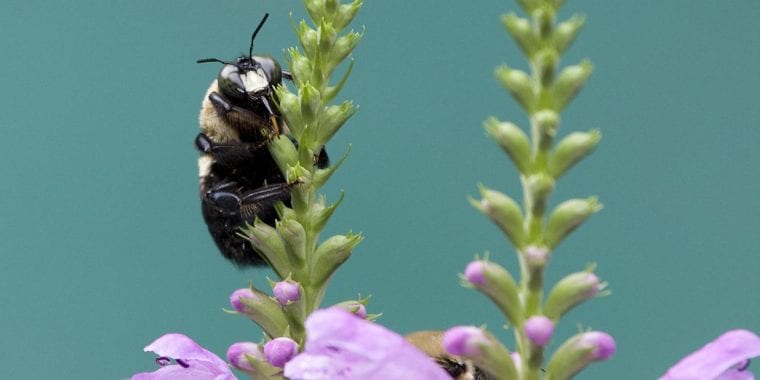In some parts of the world winter is getting closer and the end of the golf season as well. In case you missed this year to consider helping pollinators to survive, then here are some new insights on why you should help pollinators:
- Australia: Crops reliant on bee pollination represented closer to 35 percent (about one-third) of total food production. As an industry, honey bee pollinators are estimated to contribute around $6 billion a year to the Australian economy.
- In England, the honeybee population dropped 54% between 1985 and 2005. Oracle UK is working now with the nonprofit The World Bee Project. Oracle is utilizing AI and machine learning to analyze it should yield new insights for researchers aiming to understand challenges for bees.
- It is estimated that 75% of the world’s food crops could not reproduce without assistance from pollinators. Source: Klein, A.M., B.E. Vassiere, J.H. Cane, I. Steffan-Dewenter, S.A. Cunningham, C. Kremen, and T. Tscharntke. 2007. Importance of pollinators in changing landscapes for world crops. Proceedings of the Royal Society B: Biological Sciences 274:303-313. doi:10.1098/rspb.2006/3721
- Several factors have been implicated in their decline, including habitat loss, extreme temperature fluctuations (variability), pathogens, parasites, colony stressors, and pesticide exposure. Source: Goulson, D., E. Nicholls, C. Botias and E.L. Rotheray. 2015. Bee declines driven by combined stress from parasites, pesticides and lack of flowers. Science 347:1255957. doi:10.1126/science.1255957
- Similar to integrated pest management (IPM) practices, turfgrass managers can employ similar principles to mitigate potential risks to pollinators.
- Turfgrass is an important cropping system covering more than 39 million acres (~16 million hectares) in the United States. Source: Milesi, C., C.D. Elvidge, J.B. Dietz, B.T. Tuttle, R.R. Nemani, and S.W. Running. 2005. Mapping and modeling of biogeochemical cycling of turf grasses in the United States. Environmental Management 36:426-438. doi.org/10.1007/s00267-004-0316-2

The USGA is actively increasing the acreage of natural habitats in out of play areas on golf courses. I believe golf courses can provide a
quality golfing experience while also serving as urban wildlife conservation areas.
This why I highlighted at the beginning of this year Syngenta’s Operation Pollinator. Operation Pollinator plots are placed in out of play
areas on courses and superintendents can determine the habitat size that fits their needs.

I found 4 really useful tips on Greenhouse Management website that can be useful to help pollinators in our golf courses:
- Use an Integrated Pest Management program.
- Know which pesticides may harm pollinators.
- Learn pollinator visitation habits, minimize bee exposure by applying during “low flight” periods (=they are flying closer to the ground).
- Communicate with local beekeepers.
Like I said before, the building of beehives and planting wildflowers should not be an issue for a golf club. It would be really nice if more and more golf clubs could attract more rare bees, birds, and other small mammals.
If you exam the idea from golf course operations and maintenance perspective, then you will see that it requires less time-consuming maintenance to continually cut and clean dense rough.
Those golf clubs (e.g. Coventry Golf Club a GEO Certifed members-owned club) who are already paying attention to the above-mentioned phenomenon they selected areas of their golf courses that are out of play.
Just to give you a few ideas:
- Deep rough,
- Tee surrounds,
- Around the lakes and water features etc.
Pollinators & accommodating and growing urban wildlife
I am expecting that in 2019 and onwards urban planners will focus more on how to accommodate and grow urban wildlife. This comes from the understanding of human intervention on the environment and reveals the significance of the golf club’s roles in this challenge.
This is why I hold high hopes for the Portuguese Ombria Resort where the developer wants to preserve local biodiversity and developed smart buildings that utilize bioclimatic technology and innovative solar and geothermal technologies.
This article was brought to you by Syngenta.
